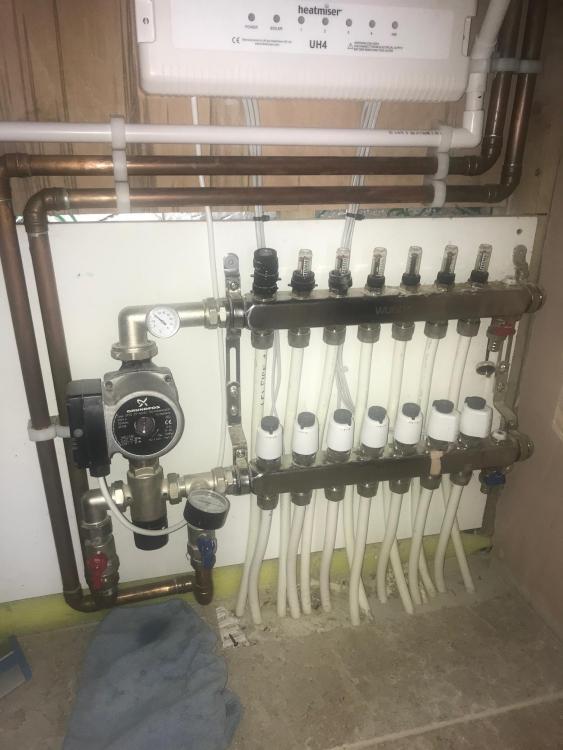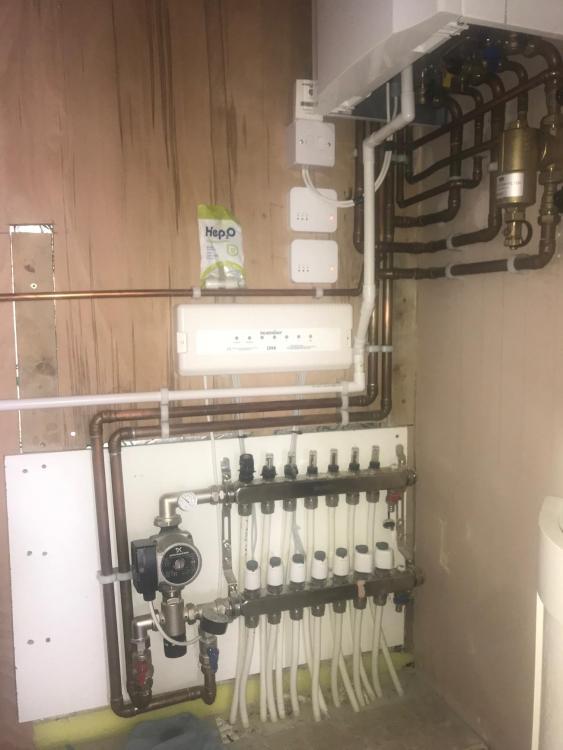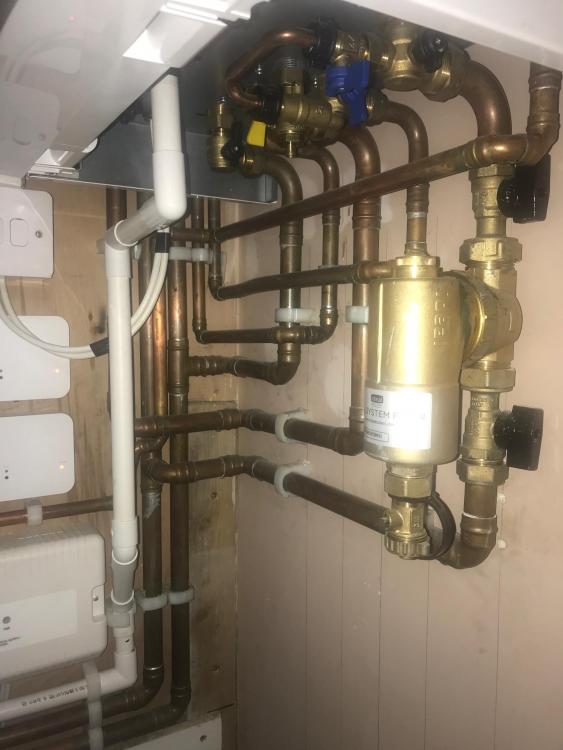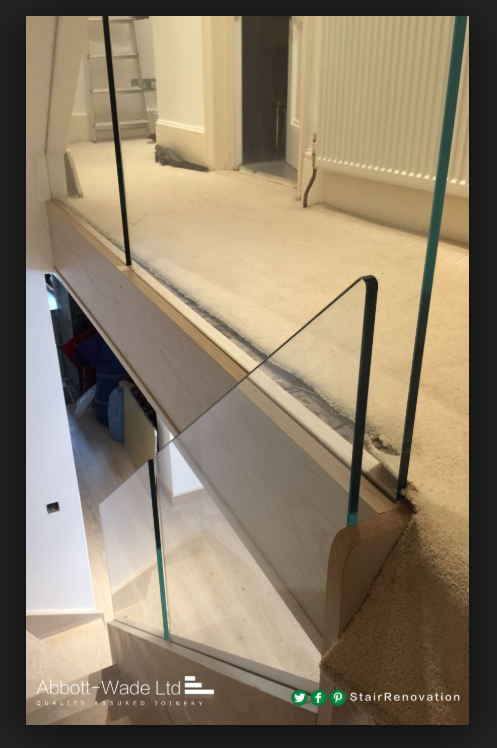
zoe61
Members-
Posts
38 -
Joined
-
Last visited
Recent Profile Visitors
The recent visitors block is disabled and is not being shown to other users.
zoe61's Achievements

Member (3/5)
1
Reputation
-
Thank you that makes sense! Ideal Vogue max combi 40
-
@Zed I've just checked and the failsafe mode was enabled. I've been struggling with internet connection the last couple of weeks and the problem only seems to have arisen then actually so hopefully that may fix the random kicking in of the boiler. @Nickfromwales if I was to fit a 2 port zone valve to the radiator pipes would this then fix my issue and put the raditors on their own zone please? Or would it create more problems (i'm a bit concered about the short cycling comment and dissipating heat)?
-
@Nickfromwales- no i dont have anything like that image. All teh UFH is from that manifold. Yes the pipes going upwards go the raditors. I wanted it so the radiators could run seperate. i.e.i like having the warm tiles in kitchen even during summer but dont want radiators on upstairs as its too warm
-
Hi so I have an issue with how my UFH and radiator zones are plumbed or maybe wired up- can someone please help advise on what I need to do? Currently my boiler just keeps turning on at random times and turning the radiators on evern though the Neo stat for radiators says it shouldnt be on. I had my UFH system designed by Wunda, I also told them that I wanted my radiators on a seperate thermostat so they sent me out the Neo Heatmiser kit with my order. My cousin then installed by boiler for me, at the time he said he thinks I need a seperate valve for the radiators because theres nothing to seperat it from the UFH zone, I've contacted him again and he has just told me I have the wrong system and can't help. I have attached pictures to show what the current system looks like. In my mind I have 3 zones on thermostats: 1 UFH for the lounge (wired), 1 UFH for the kitchen (wireless), radiators (wireless). The lounge and the kitchen work fine, it seems that the kitchen and radiators are the one that are linked together. Thank you.
-
Thanks @Neil- the staircase looks amazing!! Can I ask what thickness your strings are? Ive been told I need to increase mine to 42mm but im worried its going to look massive! @Mr Punter I wonder if its because we only have 12mm then, and increasing the glass to 15mm just gives it that more rigidity. Ideally I don't want a handrail due to visual appearances. The staircase is a straight flight that divides the open plan ground floor room into two halves, but I want to try keep my options open incase once installed I decide it needs a handrail then at least I can install one.
-
Trying to decide upon a staircase, ideally wanting to go for a frame-less glass balustrade on the stairs and landing as per the example. However having just installed a frame less Juliet glass balustrade on a balcony I'm shocked at how much the glass flexes and I'm not concerned about my choice. For anyone that's installed one or ever seen one in person, do they move? Is it disconcerting? And is there a difference in movement between the bottom mount (u-channel) fixing and the side mount metal stud/buttons option?
-
Floor construction is currently 219mm deep posi-joists with 22mm eggerboard on top. If I have a 100mm cavity would I place 100mm of the RWA45 or does it only need to be partially filled? If I chose to stay with mineral wool does just increasing the thickness from 25mm to 100mm have a significant effect or not really?
-
Trying to decide on what products to use for the stud walls and struggling to find any definite answers anywhere. My understanding is all stud walls need some sort of insulation in them- regardless of whether there is a door opening or not, but the bathrooms need increased sound insulation for building regs. Our stud walls are constructed from 100 x 50mm. Is it sufficient to use a roll product here or should I be using batts? Bathrooms- should I be using batts? Again what thickness- 100mm? For rooms where I think sound transfer could be bad I will be placing Soundbloc on both walls. For the ceilings we have a lot of batt type insulation that we got for free so I will be using that in the ceilings.
-
It's a conversion, but existing floor is a concrete slab, we are installing 140mm PIR insulation, 3 walls are effectively basement walls, that I'm putting 100mm insulation on which is massive overkill according to u-values but we had lots so might aswell use it. The front exposed wall does have quite a bit of glass in it (double glazed), but all in all I think our heat loss should be quite low!
-
Ok I've emailed Wunda for a quote. In terms of pipe spacing what have people installed there's at when they have undertaken the calcs? the quotes so far have assumed 200mm, is this roughly correct? Yes fairly practical, undertaken the majority of the work so far so I'm hoping the UFH shouldn't be too hard. My only concern is the pressure testing!
-
So in the process of ordering the wet UFH system, thing is I've had a mixture of quotes (supply only). At the top end of the scale is Nu-heat, they say that there system is insurance backed, so should it not be warm enough etc they will pay for the remedial works, it also comes with a manual and specific pipe layout. At less that half the price I have a quote from U-Heat, no manual, no insurance and a rough pipe layout drawing. Any suggestions, advice on which i should go for? Do I need the manuals and specific drawing? Or am I getting ripped off? Is the U-Heat system good? Also when installing do I need a pipe decoiler or can I make some makeshift thing on site? Thanks
-
Wouldn't that move the issue to further down the line when they come to fit the plaster board?
-
Thanks- not looking forward to this! Ill be working with the joiner so ill be trying to get the centres as close as possible to make the plastering work as easy as possible and minimise waste! High aims and all that!
-
Sorry if this is covered else where but spent a fair bit of time searching and cant find a definitive answer. So far this is what I understand, stud walls are to be constructed at either 400 or 600mm centers (600mm means a 12.5mm thickness plasterboard). Having read a previous blog and looked at the options for insulating these walls (acoustically) the options come in either 400 or 600mm widths meaning you have to cut on site. I will be using 100 x 50mm timber so 50mm will have to be cut off every time which seems a lot of hassle. Why is the insulation not made to fit the actual opening size? Is there a way around this or does it just have to be done?
-
Ok, so I've tried doing some research and struggling to come across the exact answers, may be a really stupid question though. We are planning on installing our own floorboards- which i think we have the method covered (22m P5 T&G). But prior to laying the floorboards is there anything I need to install first. For example, our posi-joists are at 400 centers, but do we need to install noggins between the joists for future stud walls where they don't sit on top of a joist, or run parallel not perpendicular to a joist? Do we need to install anything to take account of stairs, showers, toilets? And I was looking at a video of how to install a wet room tray and they cut the floorboard out and installed a new board between the joists not over the joists. Once the boards are glued down im assuming it will be a very messy job to come along and cut out later, therefore do i need to be leaving a cut out for the shower area now?




